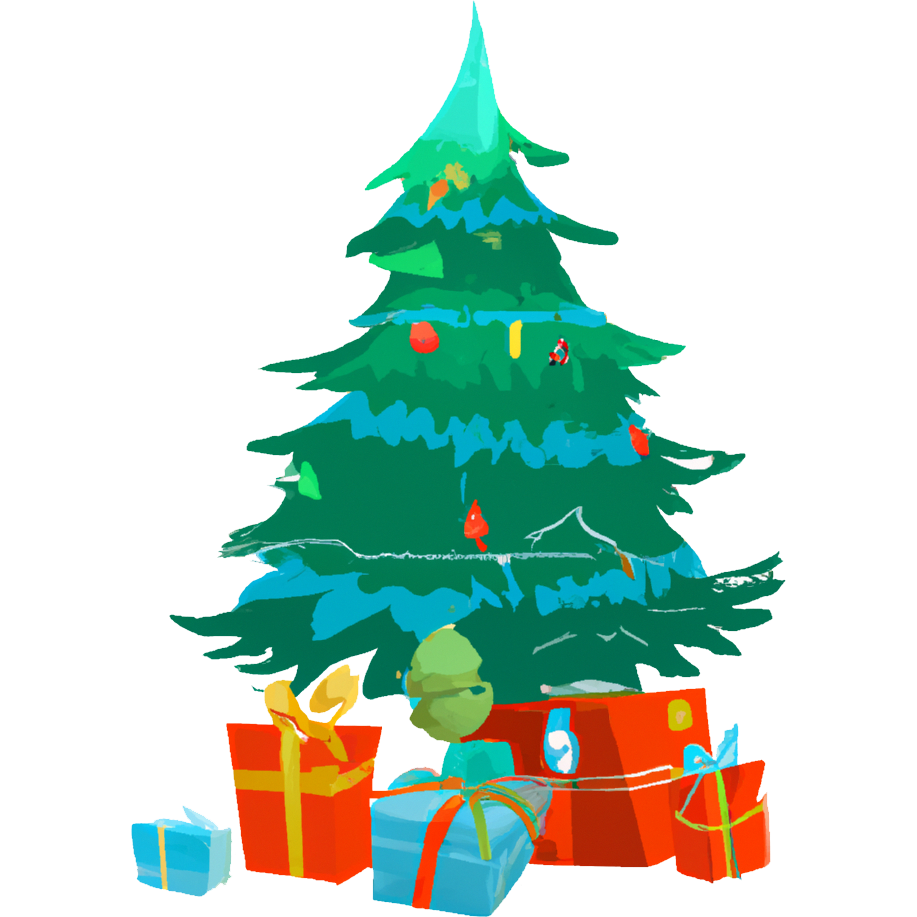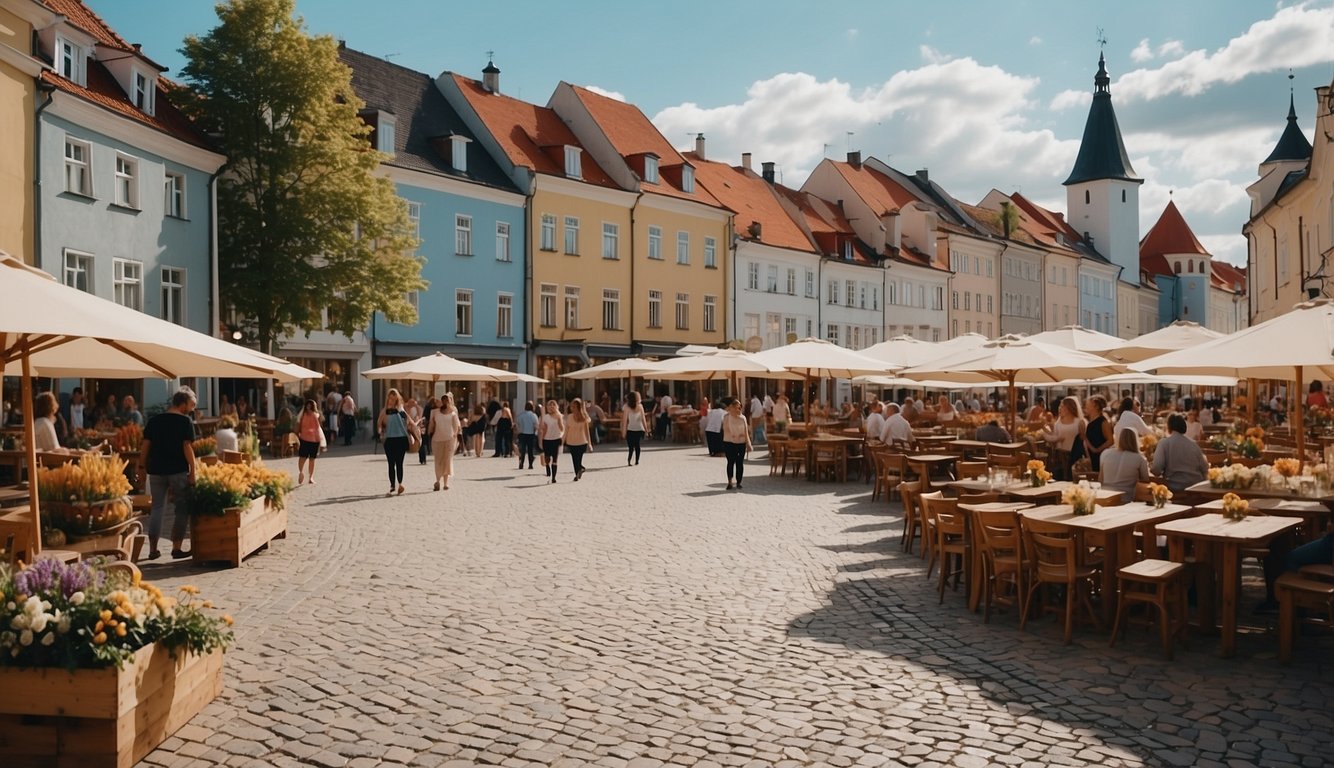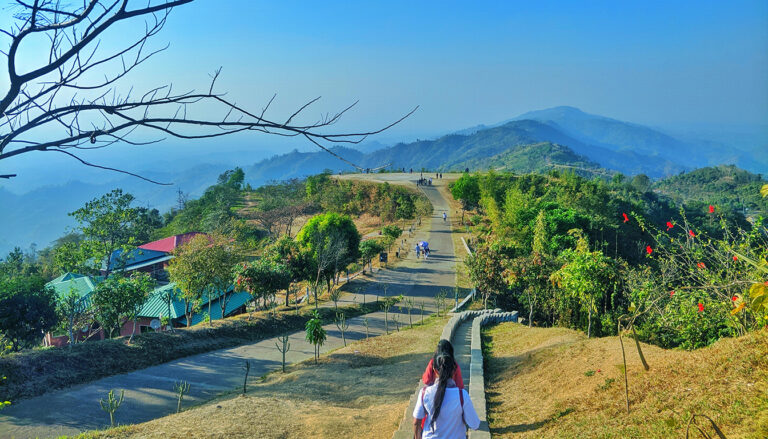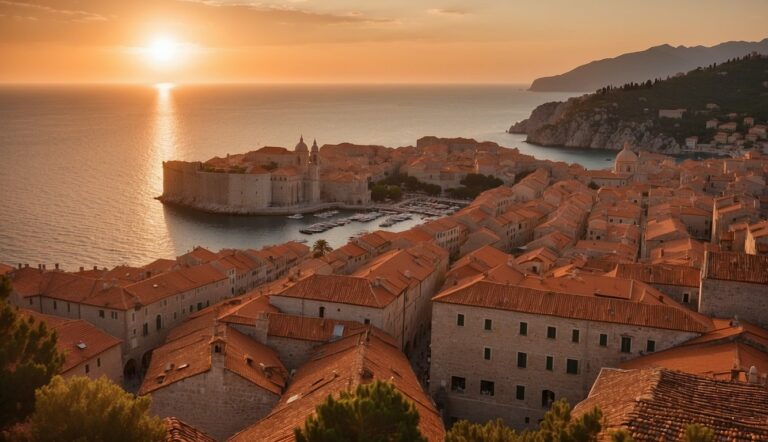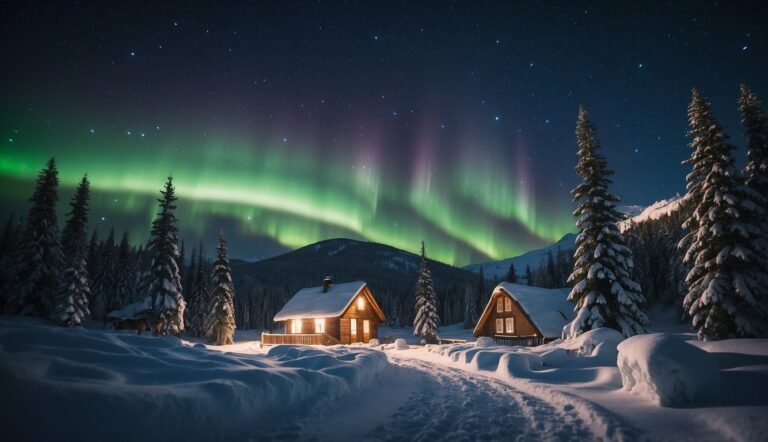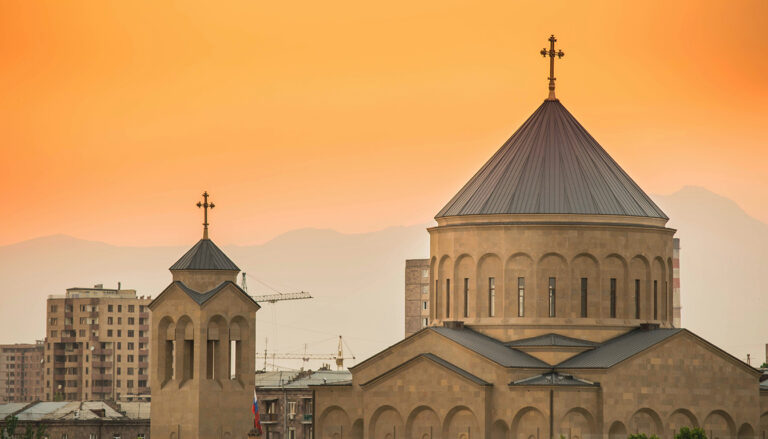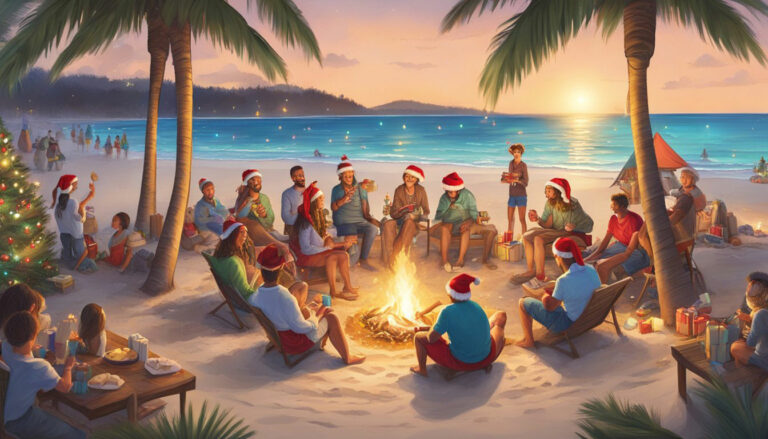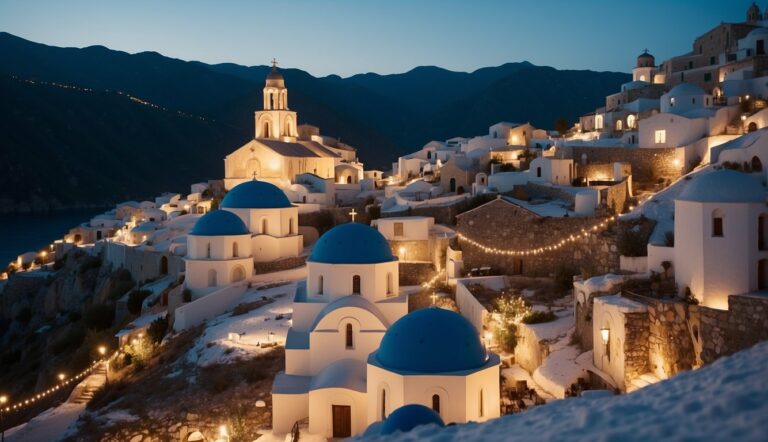Christmas in Estonia: Experience Christmas Markets in Tallinn and More
Christmas time in Estonia blends historical traditions and a vibrant festive atmosphere. The country celebrates this holiday with a deep reverence for its past and a joyous embrace of the present.
Estonia marks Christmas with the term ‘jõulud’, rooted in pre-Christian times. This term highlights a period not just for commemorating the birth of Christ but also for recognizing mid-winter festivals. The celebrations extend beyond the religious, weaving in elements of folklore, magic, and mysticism characteristic of Estonian heritage.
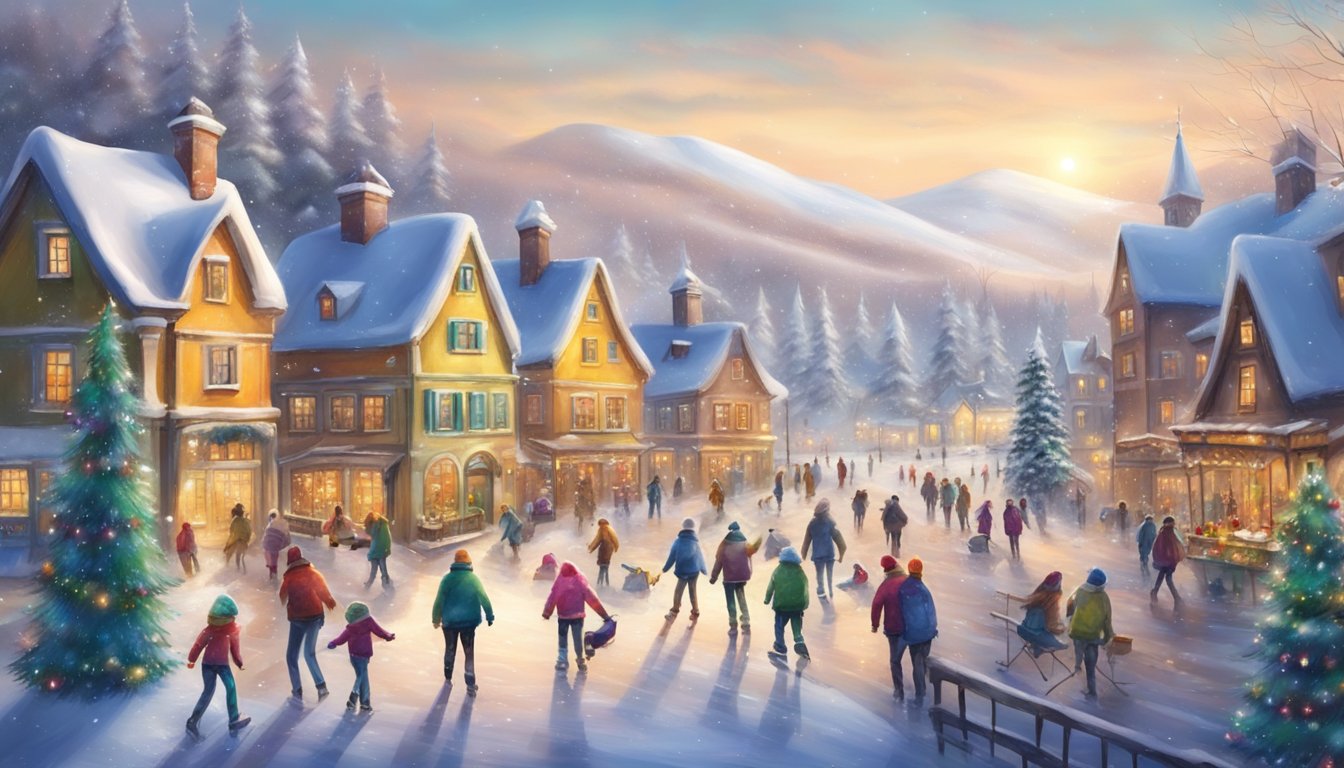
In the capital city of Tallinn, the Christmas season is especially enchanting, with its world-renowned Christmas market in Town Hall Square. This market, often cited as one of the best in Europe, showcases the festive spirit with its stalls offering traditional Estonian foods, handcrafted gifts, and the glow of holiday lights.
The medieval old town provides the perfect backdrop, where traditions such as the famous first Christmas tree, dating back to the mid-15th century, are honoured.
Estonian Christmas traditions extend to its cuisine, where the dinner table is laden with dishes like blood sausage made from blood, oats, and pork, pickled sauerkraut, and sweet treats like gingerbread. To accompany these dishes, Estonians often enjoy mulled wine, served with or without alcohol, ensuring that the festive cheer is felt by all who partake in these time-honoured customs.
Historical Background of Christmas in Estonia
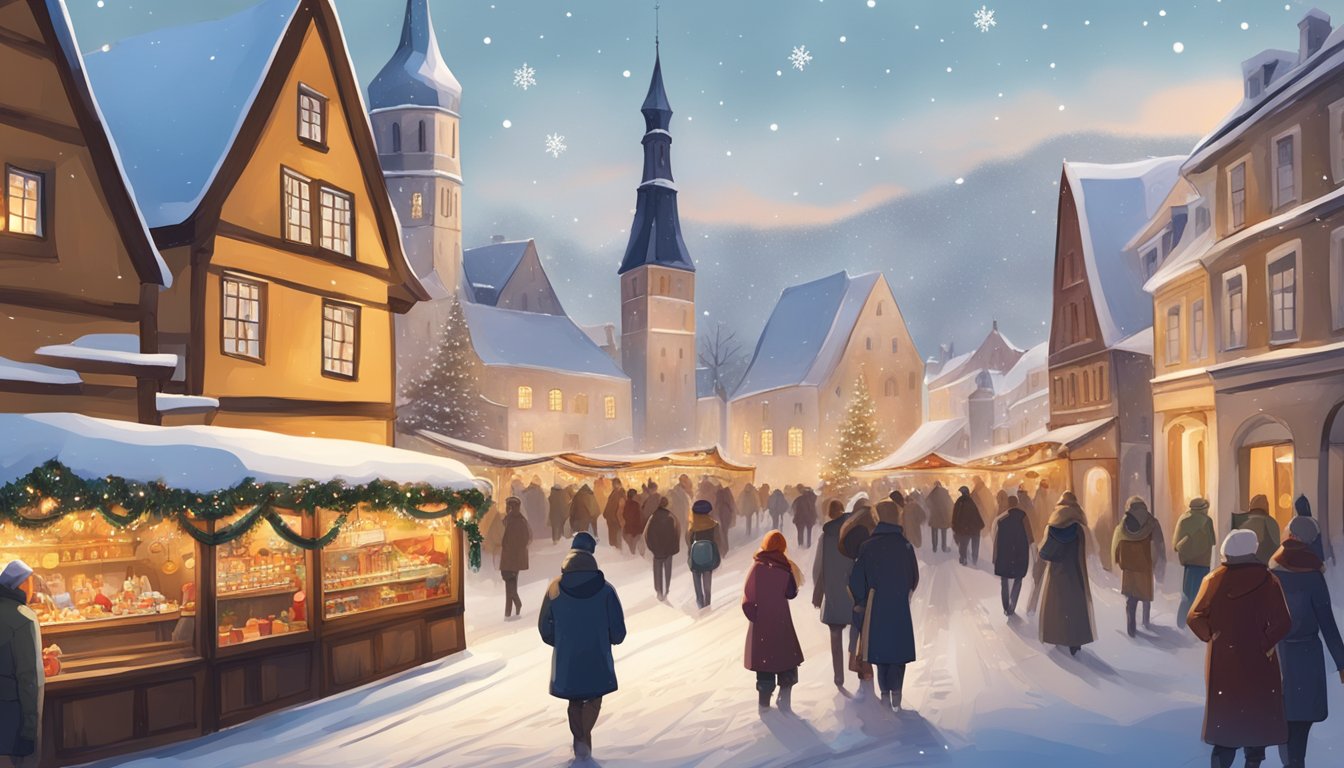
In Estonia, the celebration of Christmas, or jõulud, has evolved from ancient pre-Christian festivities marking the winter solstice to an amalgamation of customs influenced by German and Scandinavian traditions. The nation’s geographical position and historical ties with these regions have significantly shaped its Christmas customs.
Pre-Christian Celebrations
Before Christianity reached Estonia, the winter solstice was a pivotal annual event. It marked a time when days would lengthen, symbolizing the return of light and life. These pre-Christian solstice celebrations involved festive gatherings and rituals to ensure prosperity in the upcoming year.
The solstice, the shortest day of the year, was honoured because it signified the sun’s rebirth.
Influence of German and Scandinavian Traditions
During the Middle Ages, with the arrival of German merchants and the influence of the Scandinavian culture, the Estonian Christmas began to take on new dimensions. The customs introduced by these regions dovetailed with local traditions and led to the rich cultural tapestry seen in contemporary Estonian Christmases.
The German origin of the Christmas tree is particularly significant; Estonia claims one of the first recorded instances of a public Christmas tree in the 15th century in Tallinn, a claim that aligns with its reputation for early adoption of European customs.
The integration into the European Union has further cemented Estonia’s embrace and blend of diverse European Christmas traditions, creating a unique celebration that respects its ancient roots while acknowledging the influences of its neighbours.
Estonian Christmas Customs and Traditions
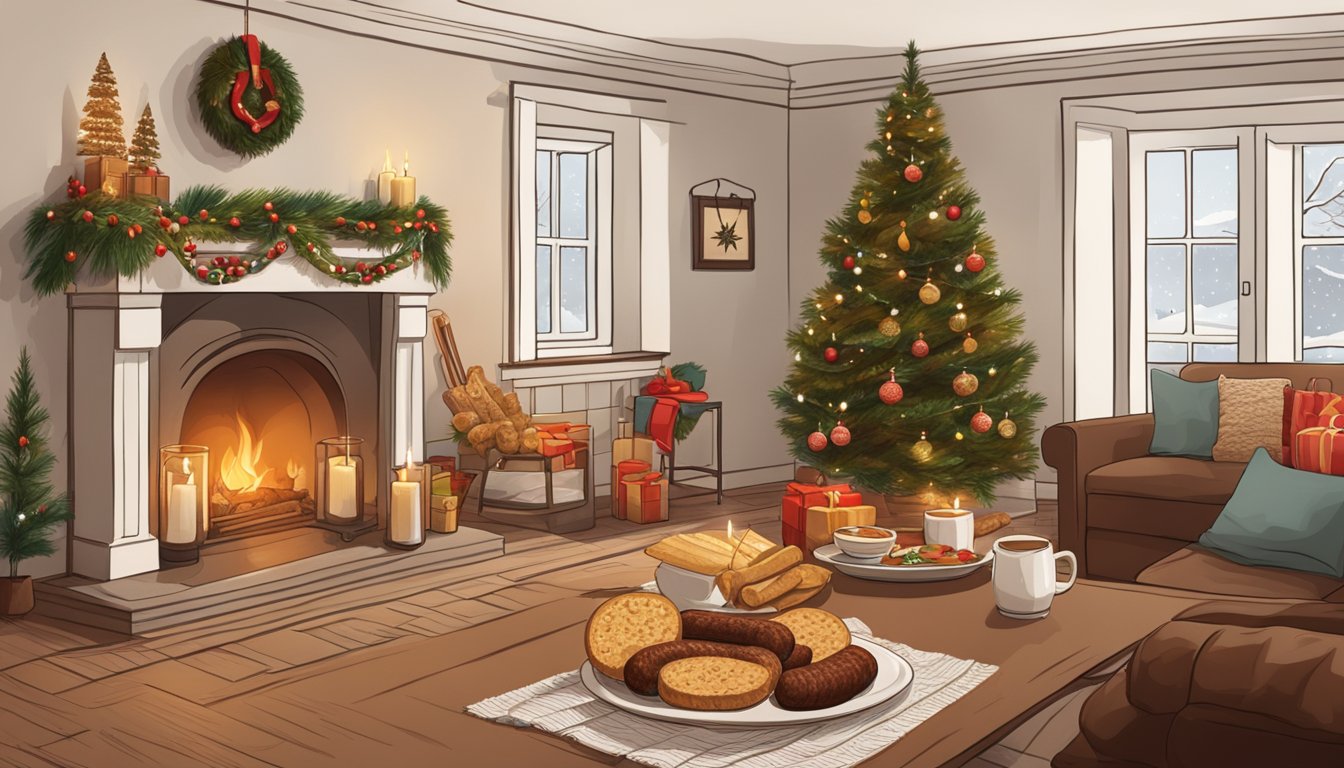
Estonian Christmas, or “Jõulud,” embodies a blend of age-old customs, family gatherings, and festive foods, reflecting the nation’s cultural heritage.
Advent and Christmas Eve
The Advent season sets the tone for Christmas in Estonia, with Advent calendars serving as a delightful countdown to Christmas Eve.
Families often light candles each Sunday leading up to Christmas Eve (Jõululaupäev), the centrepiece of Estonian Christmas traditions. Homes are meticulously prepared and decorated, and people attend church services to mark the occasion respectfully and solemnly.
Christmas Peace and Public Ceremonies
The Declaration of Christmas Peace is a revered tradition, symbolizing goodwill and harmony across the nation.
Public ceremonies commence in the historic Town Hall Square of Tallinn. The proclamation announces a time for peace and urges people to uphold the festive spirit, settle disputes, and cherish family and community ties. This public declaration reinforces the communal aspect of the holiday season in Estonia.
Estonian Christmas Food Traditions
Estonian Christmas feasts are rich with traditional dishes, showing a preference for locally sourced ingredients.
The table is graced with pork as the meat of choice, reflecting the agricultural practices within the country.
Blood sausage (verivorst) and sauerkraut (hapukapsas) are staple dishes, enjoyed for their earthy and hearty flavours that capture the essence of winter.
These traditional foods are a vital part of “Näärid,” marking the end of the Christmas season and the start of the New Year.
Christmas Cuisine in Estonia
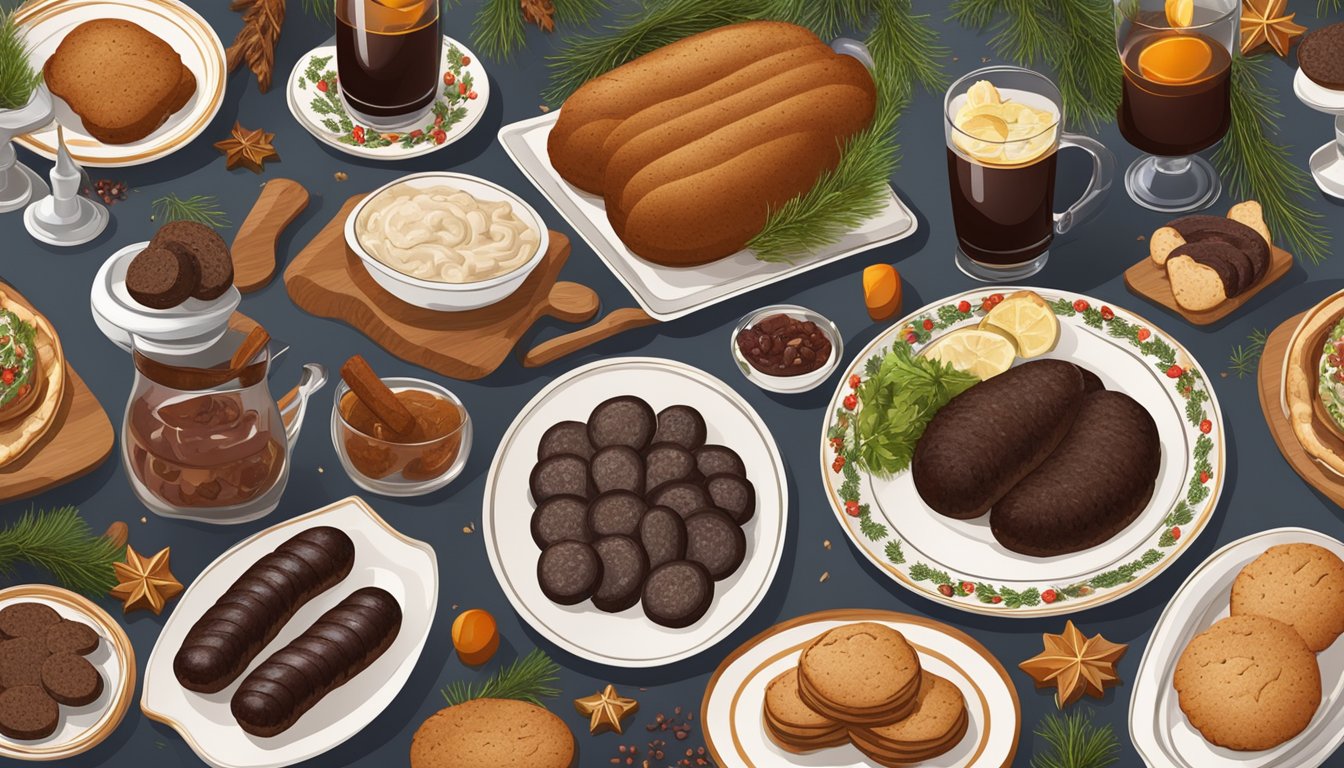
Estonian Christmas cuisine combines warming seasonal ingredients with time-honoured recipes to create a festive spread that’s both hearty and comforting.
Traditional Festive Dishes
Estonians prioritize a bountiful table for Christmas, with Pork with Sauerkraut serving as a quintessential centrepiece. It balances the meat’s richness with the tanginess of the fermented cabbage.
Accompanying this dish, potatoes are often prepared oven-roasted, providing a satisfyingly crisp counterpart.
Blood Sausage, known locally as verivorst, is another staple during the Yuletide season.
It’s typically made from barley and pork blood, encased in a natural casing and flavoured with spices and marjoram. These savoury sausages are a traditional favourite and hold a place of honour on the Estonian Christmas plate.
Sweet Treats and Holiday Baking
Sweetness and spice waft through Estonian homes during the holidays as Gingerbread and various Cookies are baked in abundance.
Gingerbread cookies are moulded into different shapes and adorned with icing and are as much a treat for the eyes as they are for the palate.
Not to be overshadowed, Christmas Bread or Pühadeleib, is a denser, sweeter bread filled with dried fruits and nuts and spiced with cardamom. It’s a festive favourite often gifted to loved ones during the season.
Celebrating Christmas in Tallinn
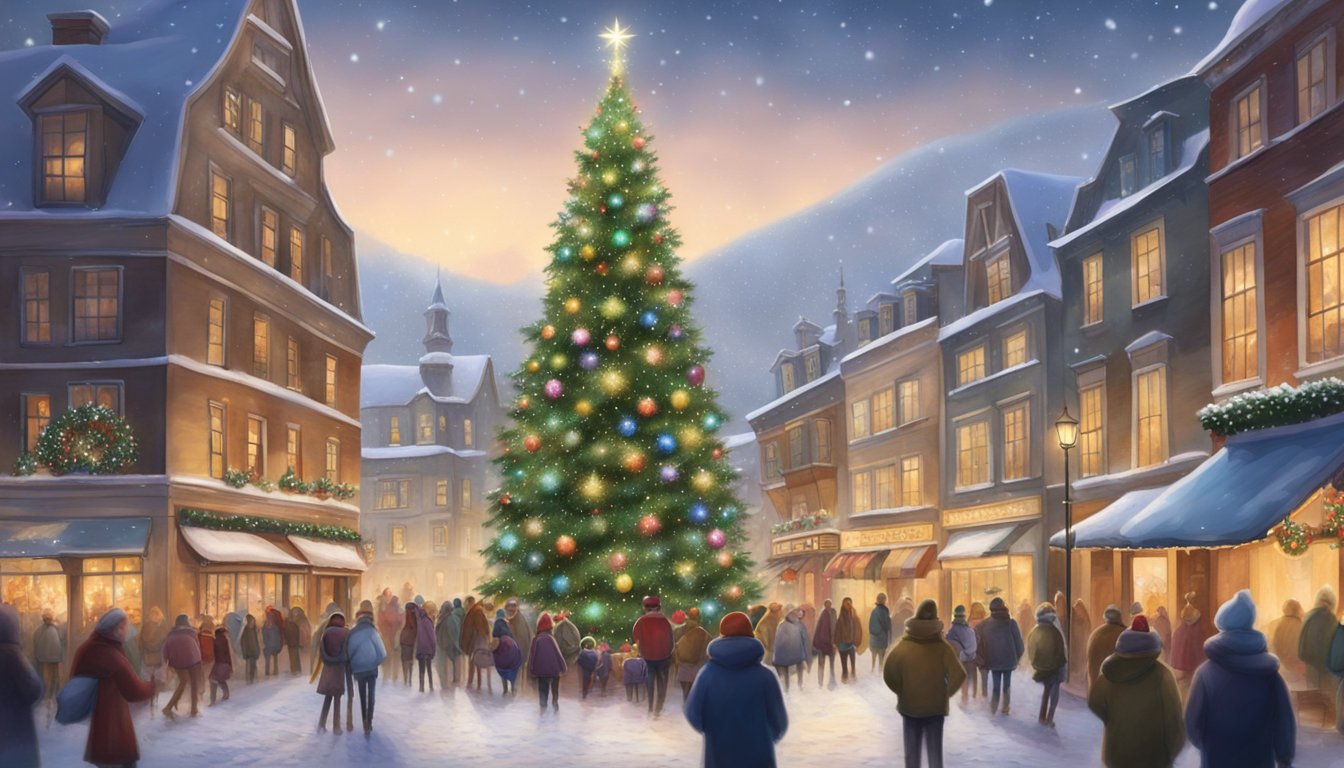
If you visit Estonia and Tallinn, in particular, during Christmas, you are greeted by a festive atmosphere permeating the historic Old Town. The Tallinn Christmas Market, Old Town festivities, and cultural attractions offer visitors and locals alike unique experiences.
Tallinn Christmas Market
The Tallinn Christmas Market is a highlight, recognized as one of Europe’s top Christmas markets. Located in the city centre in the Town Hall Square, the market dazzles with its centrepiece, an impressive Christmas Tree, which marks the spot where the world’s first public Christmas tree was erected in the 15th century.
Visitors can browse the numerous wooden stalls offering handicrafts ideal for gifts or souvenirs.
The market runs from mid-November till early January.
Old Town Festivities
Tallinn’s Old Town transforms into a winter wonderland, with its medieval buildings and cobblestone streets wrapped in Christmas finery. Ice skating in the cosy confines of the Old Town adds a classic winter charm to the experience. Some of the activities you can see are ice skating, enjoying a walk along the well-decorated streets and visiting St Catherine’s Passage for some lovely artisan goods.
Christmas Decorations and Symbolism

Christmas in Estonia reflects a blend of age-old traditions and contemporary practices, with decorations playing a central role in the celebrations. Adornments accentuate the festive spirit, ranging from the more recent brightly lit Christmas lights to traditional crafts passed down through generations.
Christmas Trees and Lighting
Estonians often decorate evergreen trees during Christmas, and the tradition of decorating the family tree plays a significant role in their seasonal festivities.
Christmas trees are central to the domestic setting and stand as communal symbols in public squares.
The use of twinkling lights and candles adds warmth and luminosity to the long Baltic nights, with the gentle glow reflecting the nation’s affection for a muted yet meaningful celebration.
Handicrafts and Home Decor
Handcrafted decorations are treasured in Estonian Christmas customs, as they embody the personal touch and artistry of the season.
Wooden ornaments are particularly popular. They are often fashioned into intricate designs and patterns and used to embellish Christmas trees and homes alike.
The Christmas season in Estonia harnesses the beauty of handcrafted decor and the enchantment of light to cultivate a reflective and jubilant atmosphere.
Festive Activities and Experiences
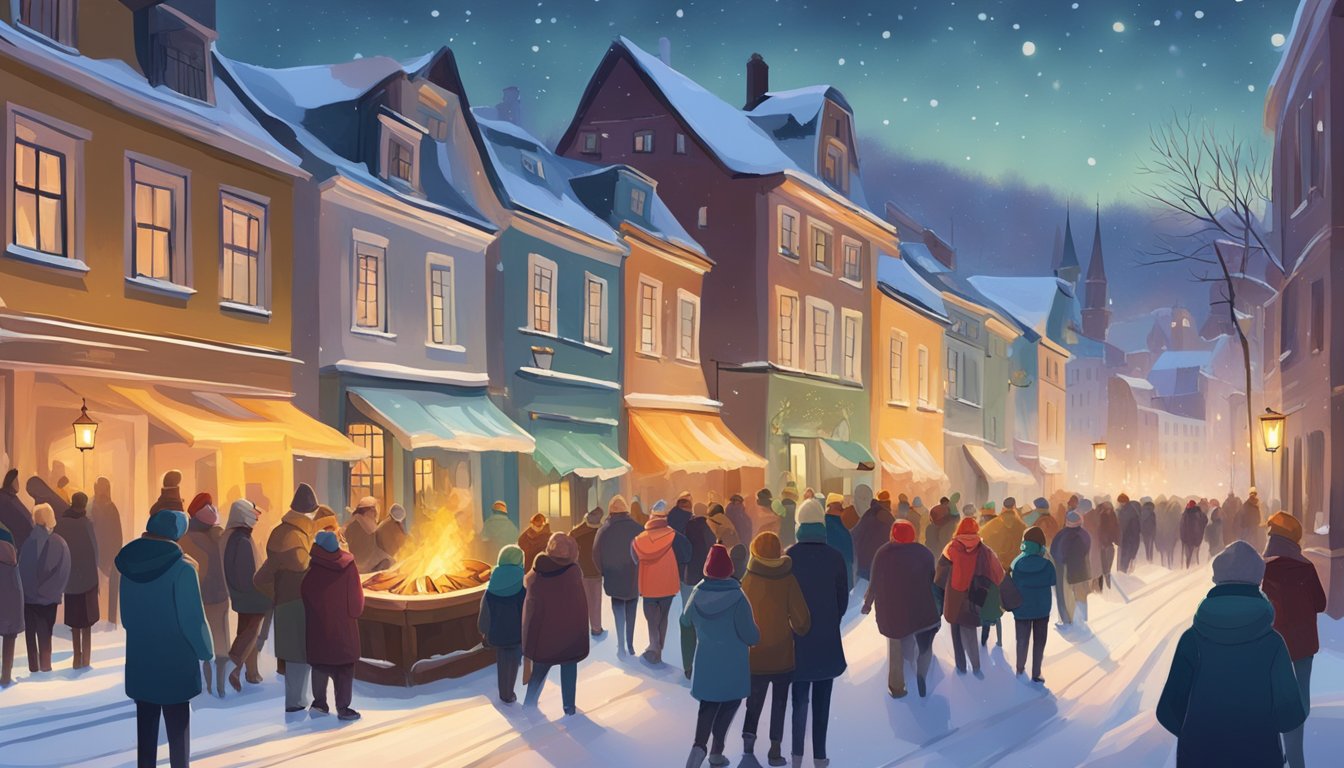
Estonia transforms into a winter wonderland during the Christmas season, offering a range of festive activities and experiential delights.
From traditional craft-making to vibrant outdoor adventures and solemn Christmas services, visitors can immerse themselves in the holiday spirit.
Christmas Workshops and Craft Making
In Estonian Christmas markets, especially in Tallinn’s renowned market, one can find a variety of workshops aimed at both adults and children.
These workshops offer the opportunity to create traditional handicrafts, such as intricate ornaments and hand-made gifts that reflect Estonian culture.
Winter Leisure and Outdoor Adventures
The cold Estonian winter provides the perfect setting for ice skating at the picturesque Old Town Ice rink.
For more thrill-seekers, the Song Festival Grounds turn into a hub for snow-related sports and activities. Families and friends can enjoy the crisp winter air and share joyful moments.
Christmas Services and Concerts
Christmas Eve Service holds great significance in Estonia.
Churches host solemn services that captivate with their tranquillity and reflective atmosphere. The country also boasts a rich tradition of concerts during the Christmas period, ranging from classical choirs to modern music performances that fill the air with festive melodies.
Additional Christmas Traditions in Estonia
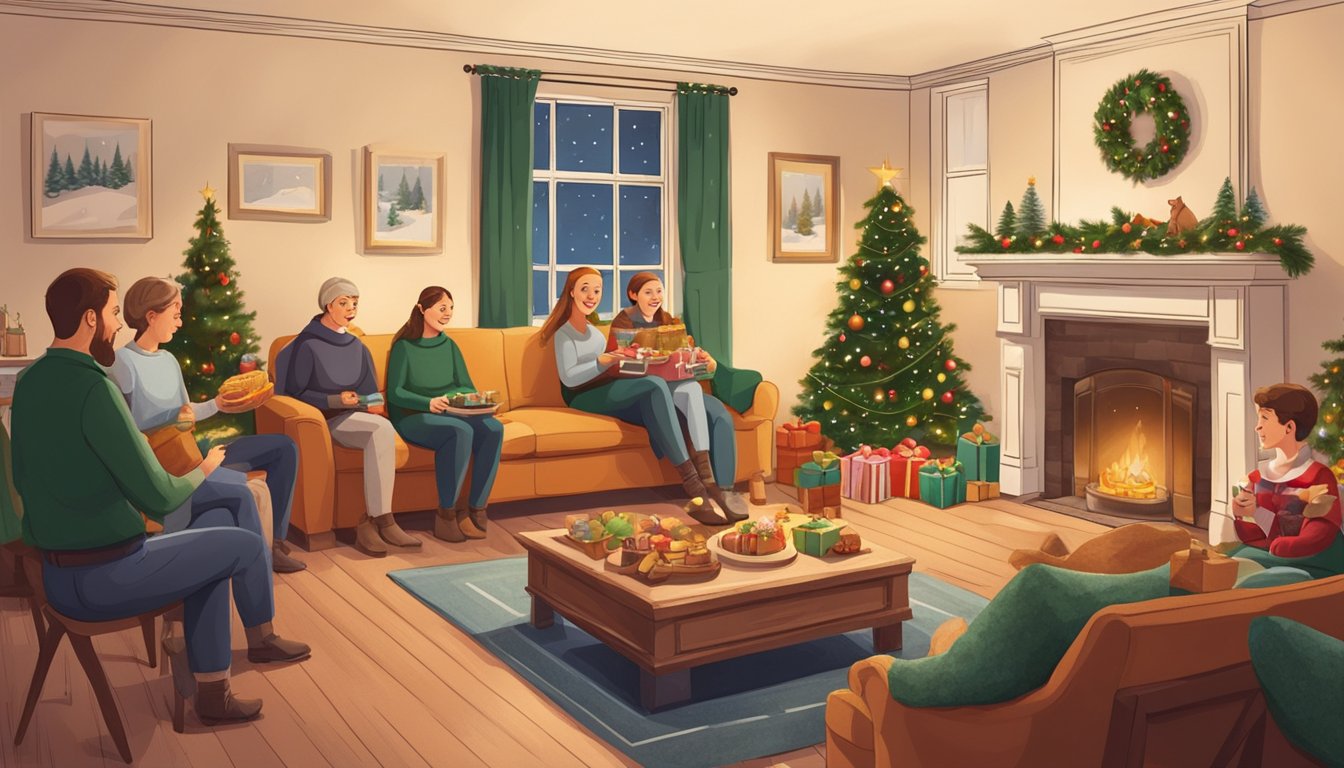
Estonian Christmas traditions reflect a deep respect for long-standing customs and regional variations, particularly in the southern part of the country, and are enriched by musical expressions of the holiday spirit.
Christmas in South Estonia
In South Estonia, Christmas Crowns hold a special place among holiday decorations.
These intricate and symbolic ornaments resonate with the history and spiritual heritage of the region.
Traditionally made from straw, they represent the sun and are associated with the winter solstice, a time when days start to grow longer again.
They are not only decor but also a nod to the ancient holiday of July, signalling the return of light.
In small towns and the countryside, people gather to craft these crowns together, which nourishes community bonds during the festive season.
Estonian Christmas Music and Carols
Estonian Christmas music and carols are integral to the celebration and often echo the season’s solemnity and joy.
Choirs across Estonia perform ancient and modern carols, reflecting the country’s strong choral traditions — a pride for many Estonians.
One may find concerts in churches, open-air markets, and concert halls, culminating with performances on Christmas Eve, which marks the beginning of Jõulud.
The tunes continue until Epiphany, an observance that concludes the Christmas period and ushers in the anticipation of spring.
Frequently Asked Questions
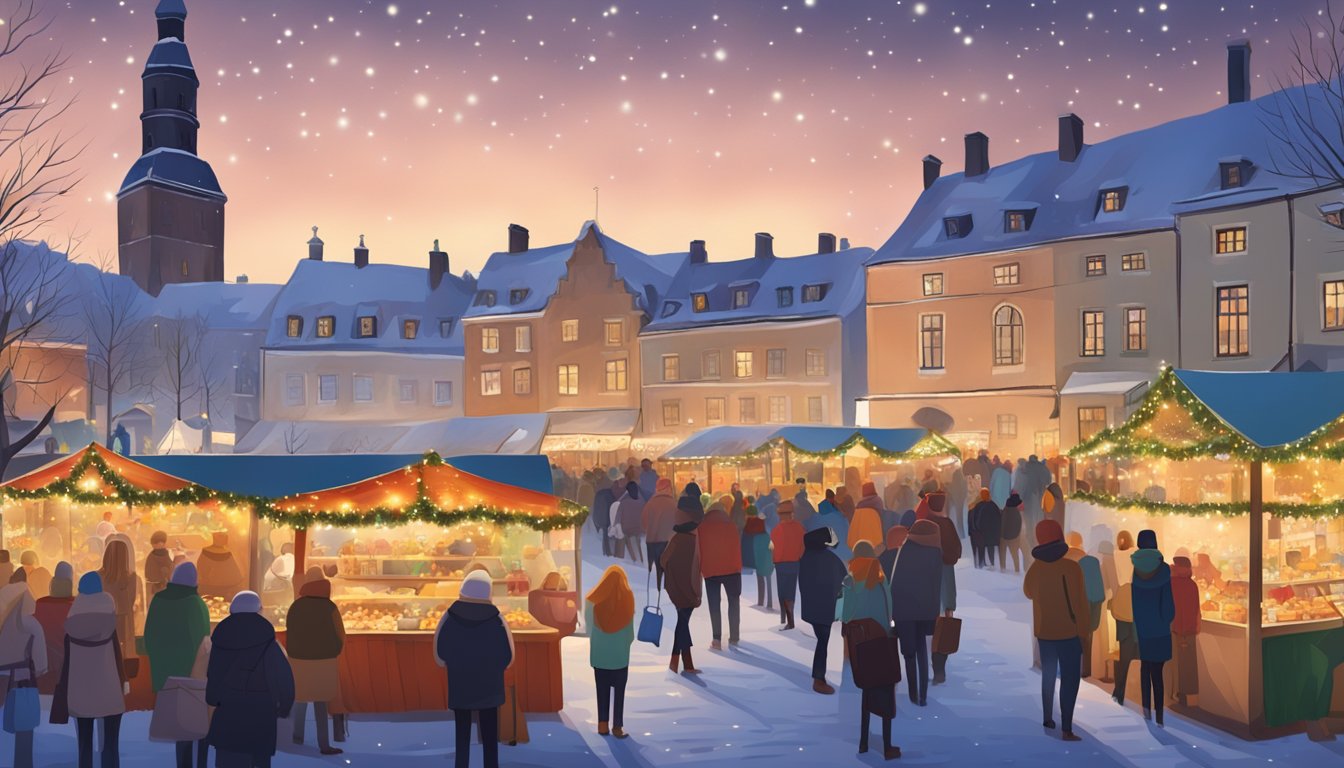
What are the traditional ways of celebrating Christmas in Estonia?
In Estonia, Christmas is traditionally a blend of sacred spiritual observances and ancient folk customs. It is a time when magic and mysticism from Estonia’s pre-Christian traditions meet the celebration of Christ’s birth.
What typical foods are served during Christmas in Estonia?
Traditional Estonian Christmas foods include blood sausage made from blood, oats, and pork, along with sauerkraut, tangerines, and gingerbread.
Mulled wine is also a popular beverage during the festivities, sometimes made without alcohol to suit all family members.
What is the history behind Estonian Christmas celebrations?
Historically, the Christmas season in Estonia has been influenced by a combination of pre-Christian winter solstice celebrations and Christian traditions.
The period is called ‘jõulud’ in Estonian, which is a term rooted in ancient indigenous festivities that predate the introduction of Christianity to Estonia.
Can you share some interesting facts about Christmas in Estonia?
An interesting fact about Estonian Christmas is that the Tallinn Christmas Market is renowned across Europe.
It was even named the Best Christmas Market in Europe in 2019. Estonia’s Christmas season is also marked by long-standing customs, such as visiting Christmas villages representing different periods and regions.
How do you say ‘Merry Christmas’ in Estonian?
To wish someone ‘Merry Christmas’ in Estonian, you say “Häid jõule.”
What are some unique Estonian Christmas decorations?
Unique to Estonian Christmas decorations are intricately designed hand-crafted items like straw ornaments and hand-blown glass decor.
Homes often feature traditional-themed elements that reflect Estonia’s rich history and cultural heritage.
